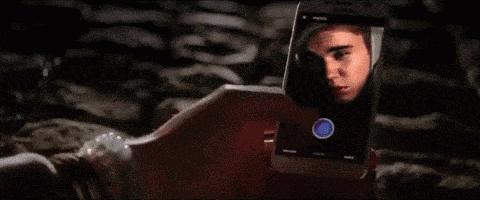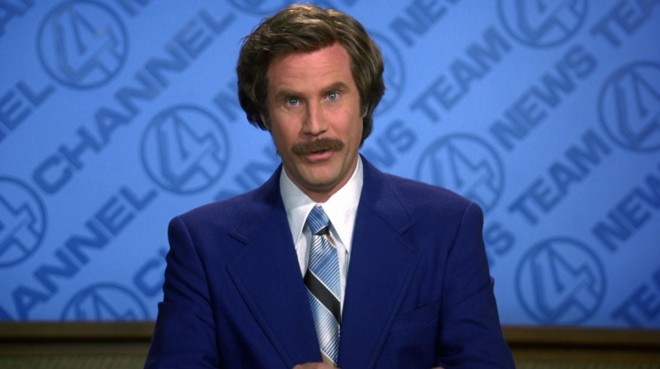‘Zoolander 2’ Review: Why Did They Think This Was A Good Idea Again?
Some details are hilarious, but the big picture is straight out of 2001.

A long, long time ago, back before people could become international celebrities by making Vines, or turn their YouTube goofs into a feature-length film, there was a slew of character-headlined, blockbuster comedies. Ace Ventura: Pet Detective (1994). Austin Powers: Man of Mystery (1997). Anchorman: The Legend of Ron Burgundy (2004). Zoolander (2001). Each was based on larger than life, living cartoons created by white dudes with backgrounds in sketch comedy.
Now, finally, with the release of Zoolander 2, each has spawned sequels with diminishing returns. But the fact that there is a 15-year gap between adventures for the ridiculously good looking, dangerously stupid male model Derek Zoolander may lead an audience member to ask why.
–
Seriously, Why?
This ‘why’ is definitely not “Why did we stop making movies like this?” The answers to that are pretty clear. A multitude of delivery services meant more comedians could create and distribute niche comedy that didn’t need to please the masses, so being the loudest clown in town wasn’t the only game. This must also become a sticking point when international box office revenue is needed to green-light most big budget films, and your riff-heavy, reference-crammed dialogue doesn’t translate.
We also just have different types of big name comedians now. The never-ending Apatonian stoner crisis flicks necessitate a realistic setting, so that minor life hiccups result in maximum turmoil. Zach Galifinakis would rather cry into his clown make up and insult the president than show up in films, and we’re yet to see golden gals Tina, or Amys Poehler or Schumer make it work at the movies. It’s a much different comedic landscape than it was over a decade ago, so the question remains — ‘Why?’ As in “why did it even get made”?
For fans of the original, it’ll be clear it wasn’t due to lighting bolt streak of narrative inspiration. It’s the same reason why Lego, Troll Dolls, and Battleship have been thrown up on the silver screen — when your only solution is a multi-million dollar return, any property can start to look like a franchise.
That isn’t necessarily a bad thing though. This run of character-led comedies did manage to do interesting things in subverting the Hollywood leading man archetype, for instance. As loud, floundering, obnoxious, and stupid characters they held a mirror up to the “heroes” of a male-dominated culture. Austin Powers showed up James Bond as the total sex pest he is, Ron Burgundy garishly exemplified a culture of casual sexism and white man laziness, and Ace Ventura, well, I dunno… Jim Carrey lets us down once again.
Deadpool is currently getting props for featuring a hero comfortable enough with his masculinity to listen to Wham! and get pegged by his beau, but Zoolander was delivering the same sexual fluidity (and soundtrack) 15 years ago. Zoolander and Hansel were, for their time, progressive characters. They both cared about their appearances, but mainly in a way that made them happy. They also refused to have their sexuality defined by working in an industry traditionally categorised as queer while also taking part in a super casual bisexual orgy.

It’s just sad that Kanye can’t admit to enjoying butt stuff after all the hard work Zoolander and others have put into over coming such stigmas.
This subversion was mainly due to just how crazily restrictive gender norms were at the turn of the century. Zoolander came out at a time when the mainstream media deemed it worthwhile that hours of television and stacks of magazines attempt to understand that some men might use hair gel, or wear a pink shirt. A new word, ‘metrosexual’, had to be invented, so singular was our concept of ‘man’. Watch this insane clip from the 2004 film Alfie, where Jude Law acts out a two-page grooming spread from GQ, smugly outlining his morning routine of picking an outfit as if it was some crazy next level pansexual life hack:
We’ve since moved past this. When most men know what Aesop products are and own a flowery summer shirt, do the philosophies of a male model still stand out as novel? More importantly, can they found the basis for a krazee character worthy of his own film?
–
Subversions Vs. Sub-Par Gags
Zoolander 2 begins (after a quick news montage that recaps both the end of the previous film and the subsequent 15 years) with Zoolander and Hansel back in the world of haute couture and international crime, all the while soul-searching in the face of impending fatherhood. The pair quickly find themselves wrapped up in a conspiracy that involves a new fashion designer/super villain (Kristen Wiig — hilarious and underused), a new exposition deliverer/love interest (Penelope Cruz), and another life or death opportunity for the pair to put the nebulous powers of supermodels to use. Will Ferrell’s Mugatu returns, as does their good friend Billy Zane, and a cavalcade of celebrity cameos that range from the ubiquitous (Neil deGrasse Tyson) to the obvious (Anna Wintour), to a few that actually land as funny punch lines (and I won’t spoil here).

This is not one of them.
The original made fun of these central characters for not caring about anything but fashion, but Zoolander and Hansel’s greatest faux pas in the new film is that they care about anything at all. Kyle Mooney from SNL plays the film’s best new character, a trashbag hipster mired in a day-glo ‘whatever’ malaise. His affectless entourage is the perfect new wave contrast to the hyper personalities of fashion’s past. Stiller’s willingness to push these scenes into loopy surrealism is still the film’s best joke — what fashion gag could seem too crazy in a post-Gaga world? The winkingly pastiched camera work (which riffs on news graphics, MTV editing, and Saw style serial killer filters) is also a highlight, and it’s a nice reminder that Stiller was aping video styles for laughs years before Key and Peele, Lonely Island, or Nick Kroll gave it a shot.
And yet, those scenes essentially amount to a really good Portlandia sketch leaving us with a lot of movie to get through. Zach Galafinakis once said that no comedy was ever made funnier by introducing a gun, and I have to agree. Zoolander’s strongest scenes were satirical insights into the world of modelling, not international assassination plots. The second film repeats the same mistakes, but confounds them by seemingly levelling out the intelligence gap between the two fashionistas and their informed Interpol offsider. Much like Elizabeth Hurley, Heather Graham, Beyonce, Courtney Cox, Christina Applegate, and Christine Taylor before her, Penelope Cruz is given naught to do as the straight woman on the scene, other than parade around in a series of low cut and revealing outfits. They reveal more about how dated these types of movies have become than any jokes about Bieber or the size of smart phones ever will.
Does all our comedy need to engage with social politics? No. Would it be nice if, in a film where a man is comfortable with having slept with a 90-year-old woman, Willy Nelson, and a pygmy hippo, the female co-lead could be given something to work with, or even be played by a comedian? Yes.
This is some of Stiller’s (and Wilson’s, and Ferrell’s) funniest, silliest work in years, with odd moments and inspired lunacy — I will never forget the cartoon pig-faced lard dispenser, and nor will you. It’s just a shame that so many exquisitely silly moments have been sewn into such an out-of-date outfit.
–
Zoolander 2 is in cinemas now.
–
Matt Roden works at non-profit writing centre Sydney Story Factory, and co-hosts Confession Booth. His illustration and design work can be seen here.
